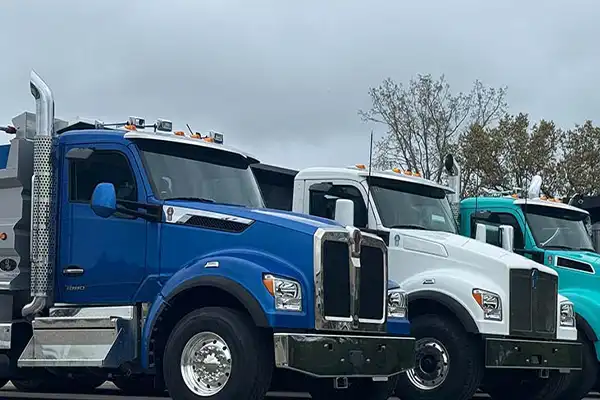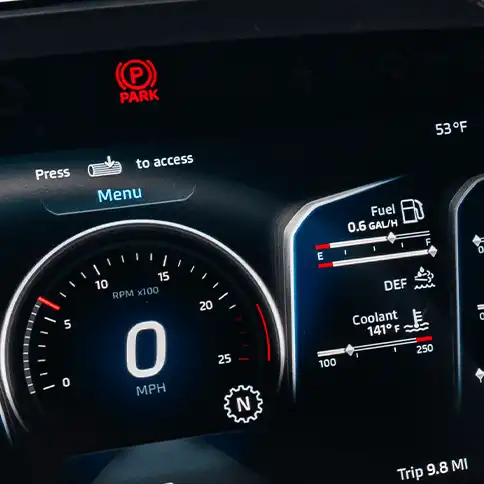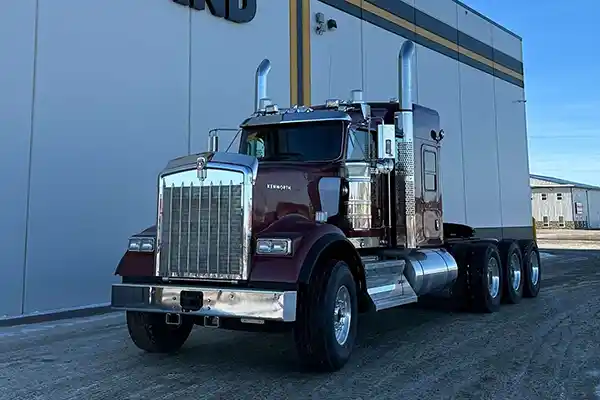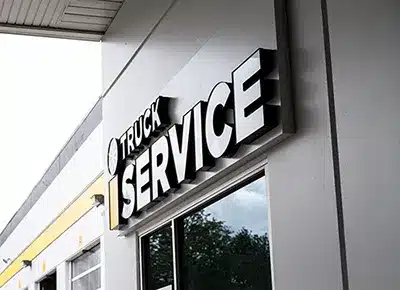
To ensure a high-performing commercial truck fleet, you’ll need a steady maintenance and servicing schedule. But where do you begin? Explore tips for developing an exhaustive preventive maintenance checklist in this guide.
What Is Preventive Maintenance for Semi-Trucks?
Preventive maintenance is the continuous upkeep and servicing of your commercial vehicle. It includes routine measures like air filter replacements, oil changes, tire pressure checks, and brake replacements. A maintenance checklist helps prevent costly issues and downtime. In turn, your commercial vehicles can enjoy many more years on the road.
The Importance of a Comprehensive Commercial Vehicle Maintenance Checklist
Following an extensive maintenance schedule can help you tackle minor hiccups before they spiral into larger, more expensive issues. Pre- and post-trip inspections also keep you and other drivers safe. Trucks are heavy-duty vehicles, so problems like faulty brakes can be damaging and fatal. Preventive maintenance keeps your fleet safe, reliable, and efficient.
Preventive Maintenance Checklist for Semi-Trucks
Your truck has numerous components that work together to ensure safe, efficient operation. All of these parts require continuous inspection and upkeep. Make sure you factor in these elements when crafting your preventive maintenance checklist.
1. Fluids & Leaks
Examine all of your vehicle’s fluids during pre-trip and post-trip inspections, including:
- Engine oil
- Coolant or antifreeze
- Power steering fluid
- Wiper fluid
- Audible air leaks
When left unresolved, fluid leaks can be costly and troublesome for your operations. They can lead to transmission slippage, performance issues, and even failure.
As you go through your maintenance checklist, remember to check below the undercarriage for dripping and pooling. If you spot any puddles, try to locate the leakage source and seek repair as soon as possible. Modern trucks often have warning lights that indicate low fluid levels, so keep an eye out for these alerts.
It’s wise to keep spare fluids handy at all times so you can top them off when needed. Follow the manufacturer’s recommendations when changing fluids. Then, turn on the ignition and check the oil pressure, air pressure, and temperature gauges to confirm all fluids are functional.
How Often Should You Change the Oil on a Semi-Truck?
Check the manufacturer’s recommendation for how frequently you should change the oil on your semi-truck. Factors such as driving habits, the truck’s age, and the surrounding environment can impact the time window between oil replacements.
However, practices like using higher-quality oil, driving efficiently, and performing regular maintenance can reduce the need for frequent oil changes.
2. Tires
Check your tires for abrasions, bulges, cuts, cracks, and severe wear. Degraded tires can pose major risks to the truck and the driver, so inspecting the tread depth and air pressure is essential. The last thing you want is to lose a wheel on the road — even more so during commercial runs and time crunches.
Use a tread depth gauge to check the tread depth on each tire. Federal regulations permit 4/32 of an inch for steer tires. For all other tires, the permitted tread depth is 2/32 of an inch.
Use an air pressure gauge to ensure each tire is inflated properly per the manufacturer’s guidelines. These specifications should be printed on the tire. Note any overinflated and underinflated tires and adjust the pressure as needed.
3. Brakes
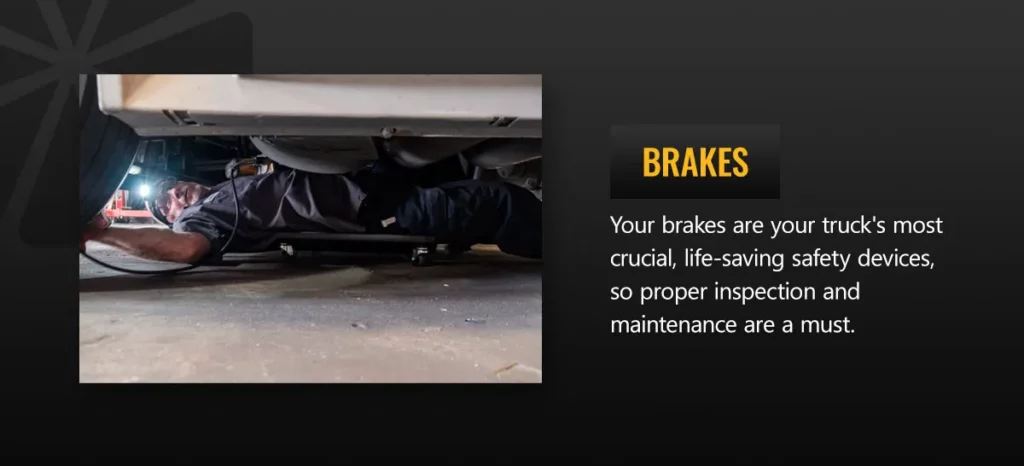
Your brakes are your truck’s most crucial, life-saving safety devices, so proper inspection and maintenance are a must. Brakes see heavy use and can wear out quickly, but they must be in the best possible condition before they’re road-safe. Examine these components and replace them immediately if you notice:
- Loud screeching or squealing noises when engaging the brakes.
- A pedal that sinks too far or lacks resistance.
- Air leaks coming from the truck or trailer.
- Cracked or damaged brake drums, pads, calipers, rotors, chambers, cam rollers, or slack adjusters.
You should also inspect brake pads to ensure sufficient lining material. The Federal Motor Carrier Safety Administration (FMSCA) enforces minimum widths for brake pad linings. Take your truck in for servicing if your linings have fallen below these guidelines. Additionally, check your brakes for any road debris or foreign materials that could compromise your braking system.
4. Air Filters
Air filters prevent foreign particles and contaminants from damaging your engine. A clogged air filter blocks airflow to the engine, so routine replacements are necessary for proper circulation and engine performance.
A dirty air filter has a brown or gray color. Typically, it has visible dirt particles nestled between the fabric folds. Meanwhile, a clean filter appears off-white with no dirt or debris in its fabric layers. If your air filter is backed up with dirt and grime, swap it out as soon as possible to stimulate healthy oxygen flow.
The ideal timeframe between air filter changes depends on your route and surroundings. For instance, if you regularly drive on dusty roads or in heavily polluted cities, you may need to change your filter every 10,000-15,000 miles. If you travel on cleaner roads in less polluted cities, your air filter may only warrant replacements every 20,000 miles.
This range can vary if you travel through different locations and environments. Use your best judgment and check the filters periodically for debris buildup.
5. Electrical System
Your vehicle’s lights are another key safety feature, as they indicate your presence to fellow drivers on the road. Inspect your truck’s electrical system at the beginning and end of each shift. Check all lights to ensure they work properly, including headlights, turn signals, brake lights, and hazards.
Check the lens for holes or cracks, and ensure there are no cuts or abrasions in the all-around wiring. Check all batteries for corrosion or loose connections and replace them accordingly. If your battery bank emits a rotten egg-like odor, one of your batteries may have ruptured and should be replaced right away.
6. Cab
Considering you spend most of the time behind the wheel, ongoing cab inspections are important. Your truck’s cab must be comfortable and functional, especially for longer trips. Before and after shifts, check the following components to ensure they’re operational:
- Seat belts
- Dashboard lights and gauges
- Ignition key and start button
- Doors
- Horn
- Clutch pedal
- Steering operation
- Defroster and AC controls
- Wiper blades
- Mirrors
Keep a Consistent Semi-Truck Maintenance Schedule with Inland Kenworth
Now that you have this complete commercial vehicle maintenance checklist, you have the tips and knowledge needed to keep your fleet dependable. If you need assistance with your truck’s inspections and servicing, Inland Kenworth can help.
In addition to our broad inventory of new and used commercial trucks, we offer high-quality maintenance and repair services to keep them in superior shape. Semi-truck servicing is available at these locations in New Mexico, Arizona, and California:
Schedule your preventive maintenance services with us today!

